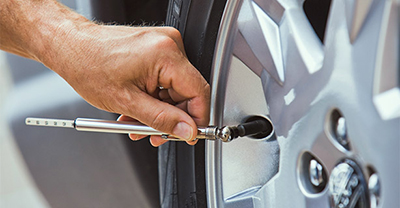How—and when—to change windshield wipers


0 min. read
Windshield wipers are vital for clear vision and safe driving, but they’re often overlooked until they fail. Regularly change your windshield wipers so when you’re on the highway during a downpour or driving through the season’s first snowstorm, you aren’t left trying to see through streaky glass.
When to replace your windshield wiper blades
Most experts agree you should change your wiper blades every six months, either with the shifting seasons or in response to everyday wear and tear. There are even specially designed wiper blades for winter weather that are more effective with snow and ice. However, the most critical factor is the condition of the wiper blades themselves.
If your wiper blades are damaged or overly worn, you’ll likely notice these signs:
Smudges or reduced contact: Inspect the wipers to check for anything stuck to the blades, like ice chunks, or visible damage.
Abnormal, irregular movements: A stuttering pattern could indicate issues such as a torn wire or a bent arm.
Visible damage: Look for torn edges or corrosion. Remember, your wipers are designed to clean a wet surface. Using them on a dry surface increases friction and accelerates wear. Factors like washer fluid solvents, road debris, ice, and UV exposure can also contribute to deterioration.
Steps to replace windshield wipers
Replacing your old windshield wipers is simple. Follow these four steps to install a new set.
Find the right size wiper blades
Check the windshield wiper connections
Replace each wiper blade one at a time
Test your windshield wipers
Step one: Find the right size windshield wiper blades
Most windshield wipers are designed to fit a wide range of vehicles with the help of connection adapters. You’ll need to know the lengths of the wipers that fit your vehicle. Typically, the front wipers are two different lengths and are purchased separately.
Check your vehicle owner's manual to determine what type of wiper blades to purchase. If you don’t have your manual handy, these options can be helpful:
Manually measure all wipers (driver side, passenger side, and rear). Measure the rubber component only (not the metal arm).
Use a credible online tool to search for the correct wiper blades using your car's make, model, and year. Most wiper brands, such as Rain-X, also offer a tool to find the size you need.
Ask someone at a local auto parts store to assist you. Be ready to provide the make, model, and year of your car.
Note there are two primary options—a rubber blade or silicone blade. Rubber wipers are the standard choice and are more affordable. However, silicone wipers typically last twice as long and are ideal in extreme weather conditions.
Car and Driver ranked the top wiper blade products of 2024 in their annual review:
Rain-X® Latitude® Water Repellency (best overall)
Bosch Icon (excellent option—easy installation)
Trico® Flex (best budget)
Rain-X Silicone Endura® (best premium)
Step two: Check the windshield wiper connections
Most wiper blades feature easy-to-use connectors that simplify the DIY process. The J-hook is the most common type, followed by side pin and bayonet designs. Your car's connector determines how you’ll install the new wipers.
Taking this step before starting the installation process can save time and help prevent confusion or frustration.
Here are some helpful video references:
Step three: Replace each wiper blade one at a time
Change your wiper blades one at a time to help protect your windshield from accidental damage that could lead to an auto glass claim. As a precaution, place a folded rag on the windshield below the raised arm. It also helps ensure you always have a functional, correctly connected wiper blade to reference.
Lift one wiper arm, pulling it out so that it's fully extended and stays on its own when you let go.
Remove the blade of the same length from the packaging, adjusting the connector as needed.
Locate the tab or button connection where the wiper meets the arm and remove the old wiper blade.
Slide the new wiper blade into place. Typically, you’ll feel or hear a click when it’s securely in position.
Gently lower the wiper arm so the blade rests flat against the windshield.
Repeat these steps for the other wiper.
Step four: Test your windshield wipers
After installing your new wiper blades, test them. Either use windshield wiper fluid or pour water onto the glass and then activate the wipers. If you installed them correctly, they’ll move smoothly and evenly across the windshield without streaks, missing spots, or chattering sounds.
Vehicle maintenance matters—so does your insurance
Simple maintenance tasks may seem small, but they play a big role in protecting you and your vehicle over time. Explore our Resource Center articles to learn more about basic car maintenance:
Having reliable auto insurance is just as important. At Dairyland®, a brand of the Sentry Insurance Group, we’ve been helping car owners like you for over 60 years by offering great rates, flexible payment plans, and excellent customer service. Be sure to ask about our available discounts, including multi-car and advanced quote options.
Discover your coverage options today. Call our team for a free quote and let us help you build a customized policy tailored to your needs.

The general information in this blog is for informational or entertainment purposes only. View our blog disclaimer.
*All product names, logos, brands, and trademarks are property of their respective owners. All company, product, and service names are for identification purposes only. Use of any of the foregoing does not imply endorsement.










